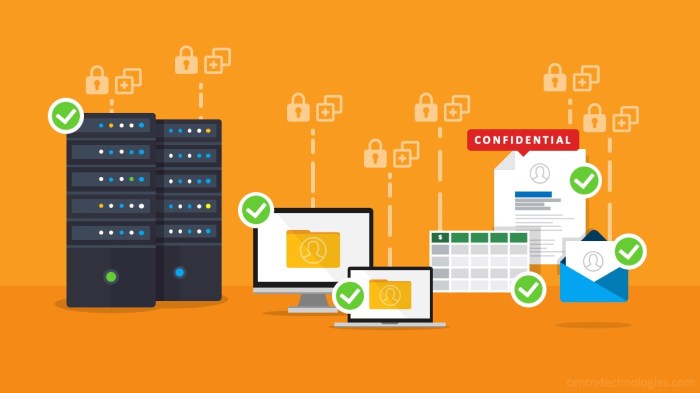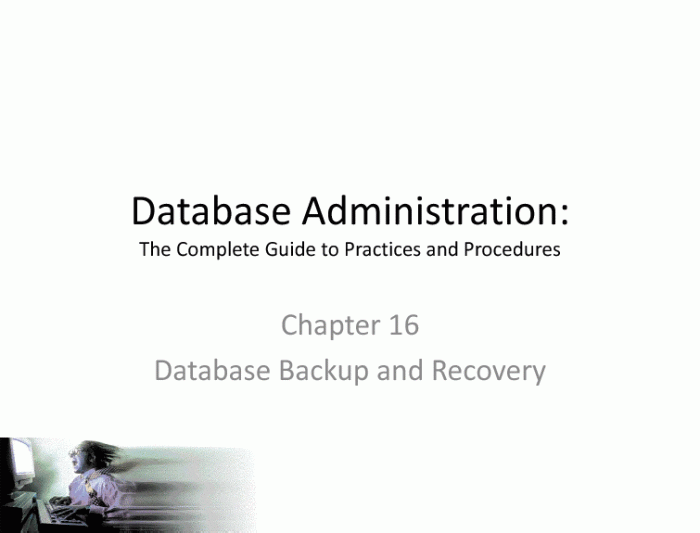Best practices for database backup and recovery processes stand as a cornerstone in the realm of data management, where safeguarding information is non-negotiable. In an age where data breaches and unexpected failures loom, understanding the critical nature of regular backups cannot be overstated. Implementing a solid backup strategy not only mitigates the risk of catastrophic data loss but also fortifies a business’s resilience, ensuring continuity in operations.
With numerous incidents highlighting the devastating impacts of inadequate backup solutions, it becomes imperative for organizations to proactively address these vulnerabilities.
This comprehensive guide explores various backup strategies, best practices for implementation, and essential recovery processes that every organization should embrace. From understanding the diverse types of backups, such as full, incremental, and differential, to leveraging modern tools and technologies, readers will gain insights that are crucial for maintaining data integrity and availability.
Importance of Database Backup

Regular database backups are a vital component of any data protection strategy. They ensure that critical data remains secure and recoverable in the event of unexpected incidents such as hardware failures, cyberattacks, or natural disasters. By implementing a robust backup process, organizations can minimize downtime and prevent data loss, safeguarding not just their operational capability but also their reputation and customer trust.The absence of a backup strategy exposes businesses to significant risks that can have dire consequences.
Without backups, organizations may face irreversible data loss, which can lead to financial losses, legal liabilities, and a tarnished brand image. For instance, when a major retail company suffered a data breach due to an inadequate backup system, they lost customer information and faced substantial remediation costs, ultimately affecting their stock price and customer loyalty.
Potential Risks of Not Having a Backup Strategy
Failing to maintain a comprehensive backup strategy can lead to several critical risks that can jeopardize business continuity. Understanding these risks is essential for tailoring an effective data protection plan.
- Data Loss: The most immediate and evident risk is the loss of important data, which can be caused by system failures, accidental deletions, or malicious attacks.
- Extended Downtime: In the event of data loss, organizations may experience prolonged downtime while attempting to recover lost data, leading to potential revenue loss and reduced productivity.
- Legal and Compliance Issues: Many industries are subject to regulatory requirements regarding data protection. Failure to have adequate backups can lead to non-compliance and subsequent penalties.
- Reputational Damage: Incidents of data loss can severely damage an organization’s reputation, resulting in loss of customer trust and business opportunities.
“Inadequate backup strategies can turn a recoverable incident into a costly disaster.”
Real-life examples highlight the catastrophic effects of not having a proper backup system in place. For instance, a healthcare provider lost access to critical patient records due to ransomware. The organization faced legal threats and hefty fines due to their inability to comply with patient data protection regulations, revealing the profound impact that inadequate backup measures can have on business operations and compliance.In summary, the importance of regular database backups cannot be overstated.
They serve as a safety net that protects organizations from various risks, ensuring data availability and business continuity in an unpredictable environment.
Ensuring data quality in business intelligence is crucial for making informed decisions. By implementing best practices and regularly evaluating data sources, businesses can achieve reliable insights. For a deeper understanding, check out this guide on how to ensure data quality in business intelligence. This approach not only enhances data accuracy but also boosts overall operational efficiency.
Types of Backup Strategies: Best Practices For Database Backup And Recovery Processes

Database backup strategies are crucial for ensuring data integrity and availability in the event of loss or corruption. Understanding the different backup methods can help organizations choose the appropriate strategy for their specific needs and risk tolerance. This section delves into various types of backup techniques, their benefits, and their drawbacks, providing a comprehensive overview for effective database management.
Backup Methods Overview
There are three primary types of backup strategies: full backups, incremental backups, and differential backups. Each method has its own unique characteristics, advantages, and challenges that influence the choice of strategy for an organization’s data protection plan.
- Full Backup: This method involves creating a complete copy of the entire database. It serves as the foundation for any recovery efforts and is the most straightforward backup method.
- Incremental Backup: An incremental backup captures only the data that has changed since the last backup, whether that was a full or incremental backup. This method minimizes storage use and speeds up the backup process.
- Differential Backup: A differential backup records all changes made to the database since the last full backup. While it requires more storage than incremental backups, it simplifies the recovery process as it only requires the last full backup and the latest differential backup.
Comparison of Backup Types
When selecting a backup strategy, it’s essential to weigh the advantages and disadvantages of each method. The table below categorizes the backup strategies based on their frequency of use and the time required for data recovery.
| Backup Type | Frequency | Data Recovery Time | Advantages | Disadvantages |
|---|---|---|---|---|
| Full Backup | Daily/Weekly | Long | Simple recovery process; complete data set | High storage requirements; time-consuming |
| Incremental Backup | Frequent (Hourly/Daily) | Short | Efficient storage use; faster backup times | Complex recovery process; requires all previous backups |
| Differential Backup | Daily or Weekly | Medium | Faster recovery than incremental; only needs last full backup | Requires more storage than incremental; longer backup times |
The choice of backup strategy should align with the organization’s recovery objectives and operational needs, ensuring data can be restored efficiently in case of an incident.
This structured analysis of backup methods highlights the importance of selecting the right strategy to optimize data protection efforts. As each method serves distinct purposes, understanding their characteristics empowers organizations to safeguard their data effectively.
Creating a robust business intelligence strategy sets the foundation for effective data utilization. It involves understanding your organizational goals and aligning them with data insights. For step-by-step guidance, explore this resource on how to create a business intelligence strategy. This strategy will empower your team to make data-driven decisions that propel business growth.
Best Practices for Backup Implementation
Implementing a robust backup solution is crucial for safeguarding data integrity and availability. An effective backup strategy not only protects against data loss but also ensures that recovery processes are streamlined and efficient. The following guidelines Artikel essential steps and considerations for establishing a comprehensive backup implementation plan.
Essential Steps for Implementing a Backup Solution
Creating a successful backup solution involves several critical steps that must be meticulously followed. These steps ensure that data is consistently protected and recoverable in case of emergencies.
1. Assess Data Requirements
Identify the types of data that require backup, prioritizing based on their criticality and compliance needs.
2. Select Backup Tools
Choose appropriate backup software and hardware that align with the organization’s infrastructure and budget.
3. Define Backup Types
Determine which backup strategies (full, incremental, differential) will be employed based on data volume and recovery time objectives (RTO).
4. Establish Backup Schedule
Set a regular schedule for backups that aligns with business operations and data generation rates.
5. Implement Security Measures
Ensure that backups are encrypted and stored securely to prevent unauthorized access.
Guidelines for Determining Backup Frequency
The frequency of backups is a critical component of the backup strategy, influenced by the importance and volatility of the data. Organizations should consider the following factors when determining backup frequency:
Criticality of Data
More critical data should be backed up more frequently. For example, financial records may require daily backups, while less critical data can be backed up weekly.
Data Change Rate
Analyze how often data changes. If data is frequently modified, a more frequent backup schedule is warranted.
Regulatory Compliance
Some industries have specific requirements for data retention and backup frequency that must be adhered to.
Backup Verification and Testing Procedures, Best practices for database backup and recovery processes
To ensure the reliability of backup solutions, regular verification and testing are essential. A structured checklist can aid in systematically validating the effectiveness of the backup process:
Backup Integrity Checks
Verify that backup files are complete and uncorrupted by checking file sizes and performing hash validations.
Recovery Testing
Regularly test the recovery process by restoring data from backups to ensure that it can be retrieved successfully.
Documentation Review
Keep documentation updated regarding backup processes, procedures, and schedules to maintain clarity and compliance.
Audit Trails
Maintain logs of backup operations to monitor success rates and troubleshoot failures.
“Regular testing and verification of backups can prevent disastrous data loss and ensure business continuity.”
Recovery Process Essentials
In the event of data loss, having a well-structured recovery process is critical for restoring normal operations. An effective recovery plan not only Artikels the steps to retrieve lost data but also identifies resources and responsibilities required during the recovery phase. This ensures that businesses can minimize downtime and data loss, safeguarding their operations and customer trust.The primary components of a robust recovery plan include clearly defined roles, systematic procedures, and the tools necessary for execution.
A well-documented strategy not only streamlines the recovery process but also helps in training personnel to respond quickly and effectively.
Components of an Effective Recovery Plan
An effective recovery plan consists of several key elements that work together to facilitate a seamless recovery process. These include:
- Identification of Critical Data: Recognizing which data is vital for business operations ensures that recovery efforts are prioritized effectively.
- Roles and Responsibilities: Designating specific individuals or teams to oversee the recovery process is essential for accountability and efficiency.
- Recovery Time Objective (RTO) and Recovery Point Objective (RPO): Defining these metrics helps establish acceptable downtime and data loss thresholds, guiding recovery strategies.
- Resources and Tools: Inventorying the software and hardware needed for recovery, including backup systems and recovery software, is crucial for quick response.
- Testing and Maintenance: Regularly updating and testing the recovery plan ensures that it remains effective and that personnel are familiar with their roles.
Step-by-Step Guide to Restore Data from Backups
Restoring data from backups requires a systematic approach to ensure the integrity and completeness of the recovered data. The following steps Artikel this process:
1. Assess the Situation
Begin by determining the scope and cause of the data loss. This information is crucial for selecting the appropriate backup for restoration.
2. Select Backup Source
Identify and access the correct backup location, whether it’s an on-premises storage solution or a cloud-based system.
3. Verify Backup Integrity
Before initiating the restoration process, check the backup for any corruption or inconsistencies to ensure reliable recovery.
4. Initiate Restoration Process
Use the designated recovery tools to start the restoration, following the specific instructions provided by the backup solution.
5. Monitor Restoration Progress
Keep track of the restoration process to address any issues that may arise in real-time.
6. Validate Restored Data
Once the restoration is complete, verify that the data is accurate and complete by conducting thorough checks.
7. Document the Recovery Process
Record details of the recovery effort, including challenges faced and resolutions achieved, to improve future recovery efforts.
Visualizing the Recovery Process
To aid in understanding the recovery process, a flowchart can be a valuable tool. This flowchart Artikels the key decision points and actions taken during recovery:
Start
Incident occurs.
Assess Data Loss
Determine the type and extent of data lost.
Select Backup Source
Identify where backups are stored.
Verify Backup Integrity
Check for corruption or issues.
Initiate Restoration
Begin recovery process.
Restoration Successful?
Yes
Validate restored data.
No
Troubleshoot issues and repeat the restoration.
Complete Recovery Process
Document and review for future improvements.This flowchart serves as a visual representation, ensuring that all stakeholders understand their roles and the sequential steps involved in effective data recovery.
Tools and Technologies for Backup and Recovery

In today’s digital landscape, the importance of robust database backup and recovery tools cannot be overstated. Businesses rely heavily on their data, making it imperative to have reliable solutions that ensure data integrity and availability. The right tools not only protect against data loss but also facilitate quick recovery in case of system failures or disasters.Various software solutions and technologies have emerged to cater to the diverse needs of database backup and recovery.
These tools vary in features, scalability, and ease of use, allowing organizations to choose the best fit for their specific requirements. Understanding the landscape of these tools empowers businesses to optimize their backup strategies effectively.
Software Solutions for Backup and Recovery
The following table Artikels some of the most popular database backup and recovery tools, along with their key features and considerations for selection:
| Tool Name | Key Features | Considerations |
|---|---|---|
| Acronis Cyber Backup | Full image backup, incremental and differential backups, cloud integration | Cost, complexity of setup |
| Veeam Backup & Replication | VM backup, fast recovery, replication options, cloud mobility | Primarily for virtual environments |
| Commvault | Comprehensive data management, multi-cloud support, analytics | High initial investment, steep learning curve |
| SQL Server Management Studio | Integrated backup and restore options for SQL Server databases | Limited to SQL Server environments |
| Backup Exec | Multi-platform support, flexible backup methods, bare-metal recovery | Licensing costs can be significant |
The selection of backup tools can significantly influence an organization’s ability to manage data effectively. Each tool presents unique advantages, and the choice should align with the organization’s IT infrastructure and data protection policies.
Cloud-Based Backup Solutions
Cloud-based backup solutions have gained traction due to their scalability, cost-effectiveness, and ease of management. These solutions store data offsite, reducing the risk of data loss due to local disasters. Key benefits of cloud-based backups include:
- Scalability: Easily expand storage capacity as data needs grow.
- Accessibility: Data can be accessed from anywhere, facilitating remote work and quick recovery.
- Cost-Effectiveness: Pay-as-you-go models allow businesses to manage costs effectively while still protecting their data.
- Automated Backups: Many cloud solutions offer automated scheduling, ensuring backups occur regularly without manual intervention.
- Enhanced Security: Cloud providers often implement advanced security measures, including encryption and multi-factor authentication.
By leveraging cloud-based backup solutions, organizations can enhance their data resilience, allowing for quick restoration following data loss incidents while minimizing downtime and operational impact.


